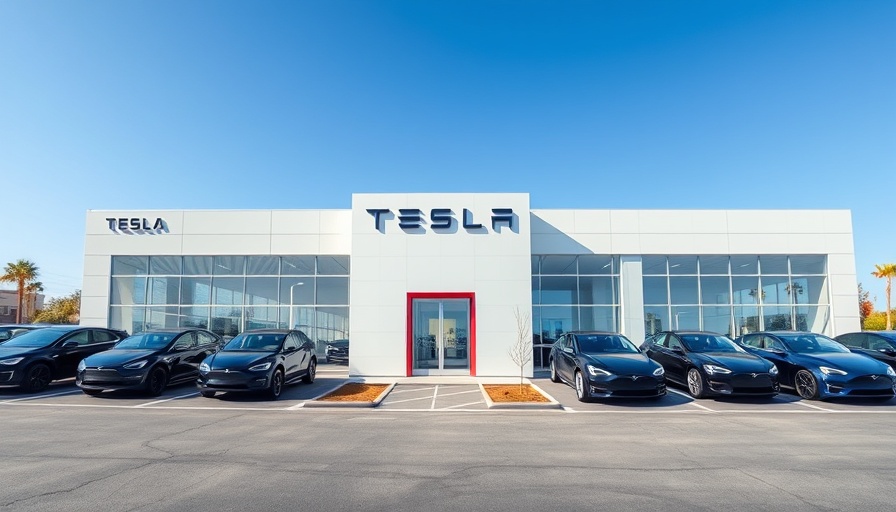
Tesla's Stunning Q1 Decline: A Wake-Up Call for Investors
Tesla has built a reputation for being an industry leader in electric vehicles (EVs), but the company's latest report reveals a shocking downturn that has left many in the automotive world reeling. With Q1 2025 deliveries plunging to their lowest level in almost three years, the automotive giant faces a critical moment that could reshape its future.
Understanding the Numbers: A Deep Dive
In the first quarter of 2025, Tesla delivered just 336,681 vehicles, marking a 13% drop from the same period in 2024, equating to nearly 50,000 vehicles less. This decline adds a stark chapter to Tesla's narrative, as it represents the largest decrease in the company's history since its inception. To put things into perspective, this had been a company that typically prided itself on year-over-year growth, even amidst industry fluctuations.
Factors Influencing the Decline: More Than Just One Bad Quarter
Analysts attribute this decline to several interwoven factors. Firstly, production adjustments tied to a Model Y upgrade could have temporarily hampered delivery efficiency. Tesla reported a significant decrease in vehicle production, down to 362,615 from 433,000 a year prior. This reduction highlights the challenges inherent in rolling out significant product updates while maintaining strong delivery numbers.
Furthermore, concerning consumer sentiment and escalating tariffs have led many potential buyers to delay their purchases. Compounding these issues are external factors such as the ongoing unrest in its showrooms, likely disenfranchising some loyal customers. It’s clear that Elon Musk's recent controversial behaviors and public musings, particularly regarding cryptocurrency and other ventures, have created a spotlight that may detract from the company’s core mission.
The Wider Implications: A Ripple Effect Beyond Tesla
The decline in Tesla’s sales isn’t merely an internal matter; it signals broader industry concerns. Other manufacturers are seeing a rise in interest and sales as they launch competitive EV models. Interestingly, the BMW Group recently reported robust sales growth in the EV sector, showcasing potential opportunities for rival brands to capitalize on Tesla’s slip.
What Lies Ahead: Can Tesla Turn This Around?
With Q2 approaching, questions linger about whether Tesla can bounce back. The automaker’s balance sheet will be closely scrutinized, as higher revenues could provide some cushioning against the steep decline in deliveries. However, the combination of declining demand overseas and increasing tariffs introduces an uncertain future landscape.
While some believe that Tesla's strong brand loyalty could see it through this tough patch, others are less optimistic. As the EV market grows increasingly competitive, the stakes are higher than ever for the once-unstoppable automaker.
Final Thoughts: Keeping an Eye on Tesla
For investors and EV enthusiasts alike, Tesla's Q1 decline serves as a crucial reminder of the volatility that can accompany fledgling industries. The upcoming months will reveal whether Musk and his team will manage to navigate out of this storm or if it marks the beginning of a larger decline. Looking ahead, potential buyers should weigh these developments carefully, as now might be the opportune moment to consider alternative EV options.
 Add Row
Add Row  Add
Add 




 Add Row
Add Row  Add
Add 

Write A Comment